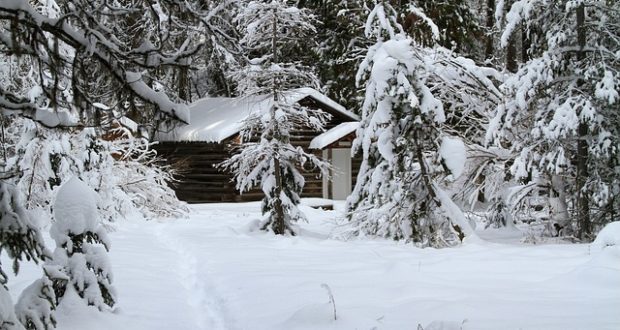Blog
4 hidden dangers of winter that can kill you
Hidden dangers of winter
Even for the outdoor experienced, it is good to review winter safety protocols to make them fresh.
Too often, we relax, believing that nothing bad will happen to us. However, things do not always go according to plan and it is better to be safe than regret.
Here are four problems related to safety and winter awareness that everyone should remember.
1. Watch out for black ice.
Black ice is ice hidden under the snow. It can be on the roads, pavements, stairs, and even in the yard where the ground is difficult. Fresh snow can create an illusion that you can walk on it. An unexpected fall on ice can lead to serious injuries – and if you hit the head and even death.
Sometimes, however, walking on ice in an inevitable. If so, go like a penguin. Yes, penguin! Wadding, like a penguin, allows you to maintain balance by focusing the upper body on the legs. Just hold your arms on the sides, stretch your shoulder distance and take small, bale steps. Remember to breathe and remain a limber. If you fall, keeping a limber can protect your body against injuries, because too stiff can worsen damage. Also try landing on the butt or upper thighs, where you have more lining, as opposed to attempting to stop falling with your hands, which can cause fractures or break.
2. Know signs of frostbite.
Frostnip is a tingling, which happens first, and it is a warning sign that the body parts become too cold. When you feel tingling in your fingers, hands, fingers, feet, nose or ears, it is a sign that you have to warm up. If you ignore the signs, it can lead to frostbite. During this first stage you will notice redness and it can be painful, but permanent damage will not occur as long as you take action.
The manual device ensures emergency backup power
Hidden dangers of winter
Frostbite begins when the skin becomes numb and begins pale and even white. You can start feeling warm, but at this stage it is not a good sign, because it is an unfavorable reaction to frostbite. If this is not treated, the skin of the affected body parts will begin to die and become black.
When your body tries to fight frostbite, you can experience an intense chills, loss of coordination, idea and drowsiness. It is necessary to look for heat and emergency help as soon as possible.
3. Monitor carbon monitoring levels.
Carbon monoxide is odorless, invisible gas. Without taking the right means, you won’t know that it is present until it is too late. Therefore, it is necessary to keep the carbon monoxide detector at home and another place where you use a heat source.
Carbon monoxide can be made from a fireplace of natural gas or wood, as well as from kerosene and similarly powered radiators. A good way to prevent carbon monoxide poisoning is to check the equipment every season and make sure that there is adequate ventilation.
Here are signs of carbon monoxide poisoning:
- Blunt headache.
- Weakness.
- Dizziness.
- Nausea.
- Dyspnoea.
- A blurred vision.
- Vomiting.
- Confusion.
- Loss of consciousness.
Do not let these symptoms deceive you that you just have flu, especially if you use one of the mentioned heat sources. Go outside immediately in the open air. Call the number 911 as soon as possible and test your home and source for leakage.
4. Watch out for signs of hypothermia.
Don’t get light. It can be a sign that the core body temperature will fall. Flacking does not mean, however, that you are still in danger. You still have time to act. If the thrill becomes uncontrolled, more than the likely it is that hypothermia appears. It is necessary to soon reach a warm place.
Learn the signs of hypothermia:
- Start feeling clumsy.
- I feel sleepy.
- The chills become uncontrolled.
- Stops
- Your speech is stunned.
- You notice that you make bad decisions.
- Your energy levels drop quickly.
Hypothermia treatment:
- Remove wet clothing.
- Move. You need to raise your body temperature.
- If possible, measure towards heat and shelter.
- Start developing with dry clothing, blankets, heat packages or fire.
- Drink hot liquids – but not alcohol or caffeine, which can help in heat loss.
Remember that other threats, such as snow damage, are also possible. Be smart, be aware and do things as safely as possible.
It is better to be prepared for situations exposed to winter than not. You never know when you can be in a survival situation.
What advice would you add? Share it in the section below:

